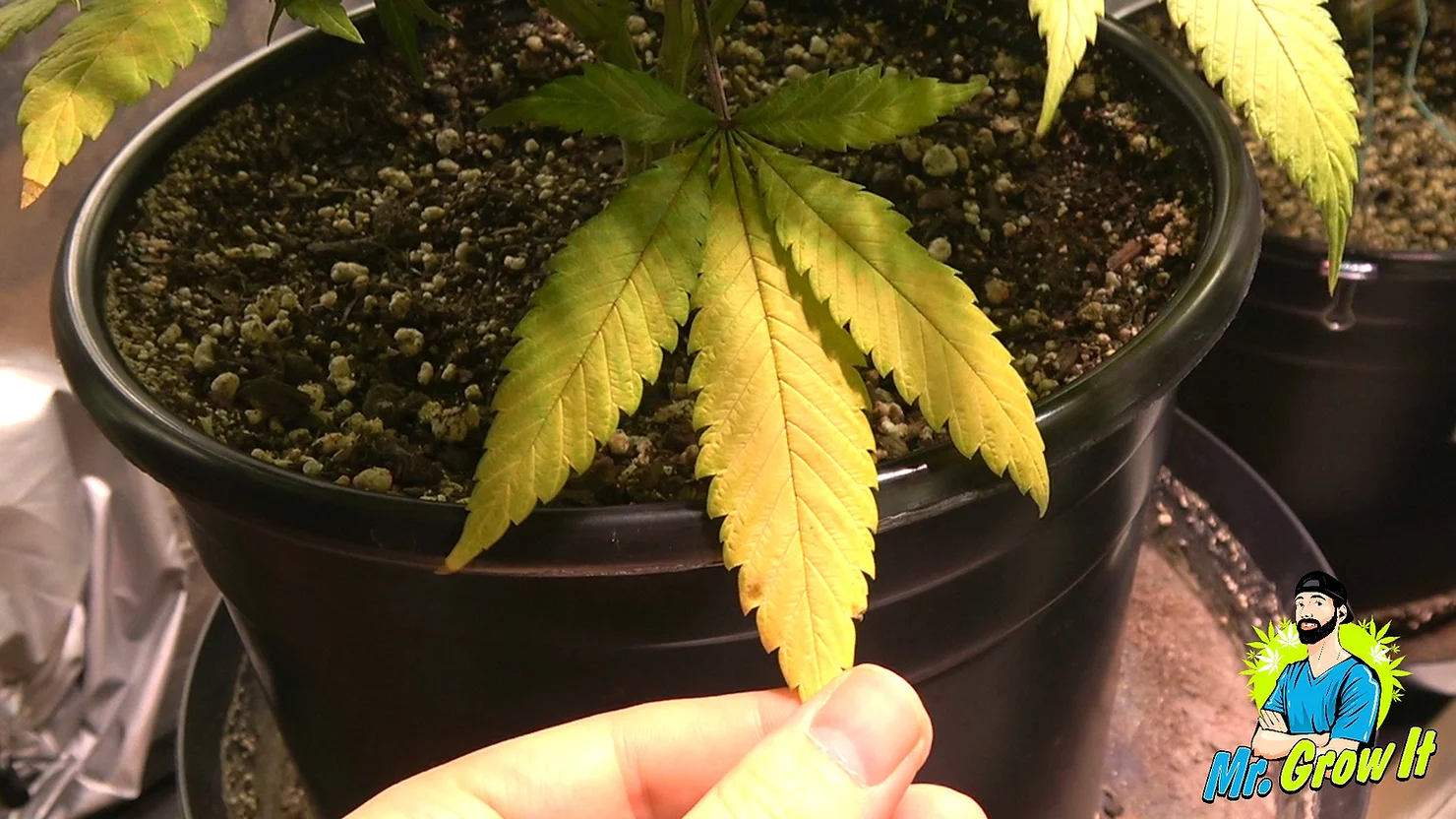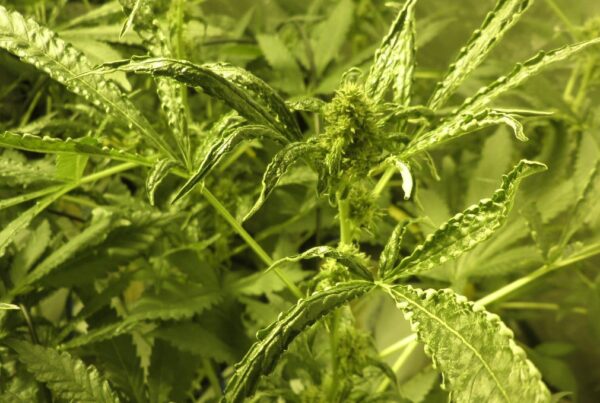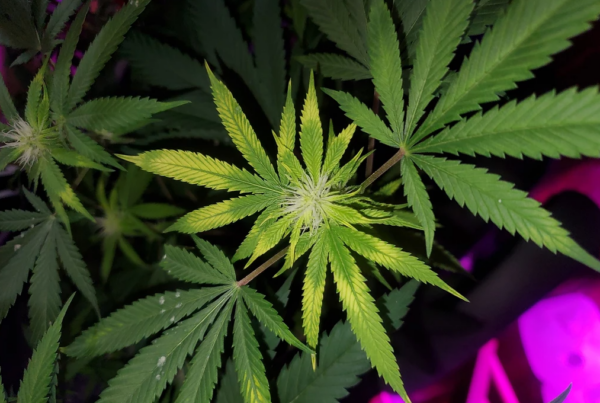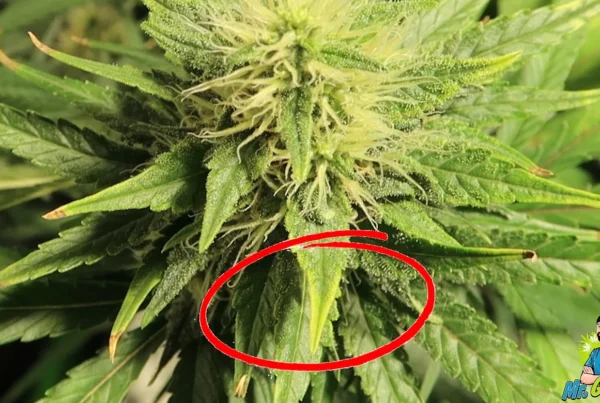Nutrient deficiencies are certainly troublesome for cannabis growers – especially when you were expecting an easy journey. But you may get even more anxious if your plant becomes deficient in a vital nutrient like nitrogen. Nitrogen plays numerous roles when it comes to the proper functioning and development of plants, yet, nitrogen deficiency in cannabis is not uncommon. The good news is that it is easy to identify and fix. If you suspect that your plant has nitrogen deficiency, use this article to accurately diagnose and properly treat the issue.
Role of Nitrogen in Cannabis Plants
Nitrogen is a macronutrient and is a crucial nutrient for several major plant functions. Nitrogen is required for the production of protein as it is converted to amino acids, the building block for proteins. Nitrogen is also required for chlorophyll formation, the green pigment that is required for photosynthesis. Nitrogen also stimulates plant growth and development by aiding the formation of nucleic acids. In short, nitrogen is a macronutrient that is essential for the cannabis plant’s growth and critical functions like photosynthesis.
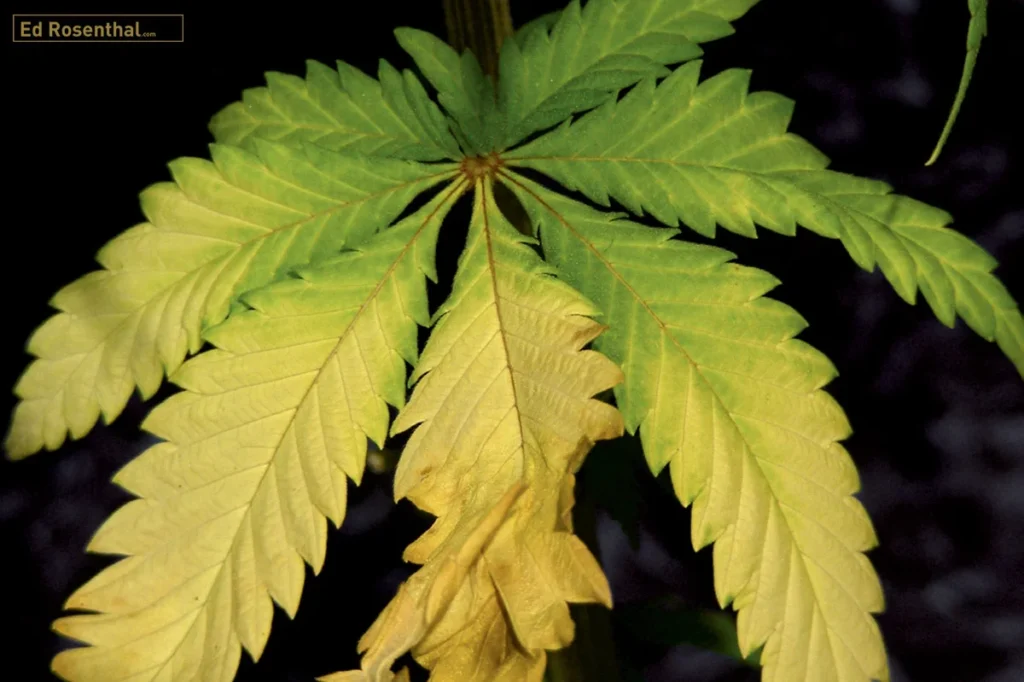
Symptoms of Nitrogen Deficiency in Cannabis Plants
Nitrogen is a mobile nutrient; This simply means that the plant can transfer this nutrient to the parts of the plant that need it – or where it is deficient. The key symptom of nitrogen deficiency is the yellowing of the older leaves, starting at the bottom of the plant. When a cannabis plant is deficient in nitrogen, the leaves closest to the light (or newer leaves) take up the nitrogen from the older leaves, which results in chlorosis of the older leaves. As the deficiency worsens, the older leaves curl or fold, become dry and crispy, and eventually fall off.
Another sign of nitrogen deficiency is that the yellowing travels up the plant. If the plant is not treated, newer leaves also begin turning yellow. Generally, if a plant has relatively low nitrogen levels, you may see that the leaves are light green, lime, or yellowish in color and no spotting or curling of the leaves is present. Here is a list of symptoms that you can use to diagnose nitrogen deficiency in your cannabis plants:
- Older leaves becoming yellow, starting at the tips
- The overall pale or yellowish appearance of the leaves
- Leaves curling, becoming dry and falling off
- Chlorosis traveling up the plant, youngest leaves getting yellow
- Early bloom with low flower production
Nitrogen deficiency that occurs late in the flowering stage is not as troublesome, and is even considered by many growers as normal. It happens because the cannabis plant starts using up nitrogen during bud formation. It is considered desirable because in the flowering stage, the plant does not need as much nitrogen as it does in the vegetative stage. Too much nitrogen in flowering can lead to small, airy buds. Less nitrogen in flowering leads to proper bud formation. Nitrogen deficiency in the vegetative stage or early flowering stage should be fixed as soon as possible since it can impact the yield and overall health of the plant.
Nitrogen Deficiency Treatment for Cannabis Plants
Now that we have established that nitrogen deficiency in the vegetative stage or early flowering stage can negatively impact yield, it is important to treat it as quickly as possible. Here are a few tips on treating nitrogen deficiency:
- Feeding Nitrogen: Feeding nitrogen will help your plants recover from nitrogen deficiency. If you have not been feeding your plant any nutrients, then it is time to get some fertilizer from the store. Many growers use synthetic fertilizers that often come in bottles. You can instead go with an organic fertilizer such as an organic blend, fish meal, fish emulsion, cottonseed meal, alfalfa, manure, or nitrate of soda. Nitrogen is usually present in all plant foods or pre-mixed nutrients. Generally, water-soluble fertilizers with high levels of nitrogen are recommended since the plant can quickly begin absorbing these. Insoluble nitrogen takes longer to become available for absorption as they first require microbes to break them down into a form that the plant can uptake. Note: You will need to use a different kind of nutrient formula in the flowering stage. The feeding chart from the nutrient manufacturer will reflect that. Bloom or cactus nutrients are suitable for flowering stages. Finding and using the correct nutrient formula for each stage is very critical.
- Correcting pH Levels: If you are feeding nutrients but your plant is still showing signs of nitrogen deficiency, likely, the pH level at the root zone is not correct. Cannabis plants cannot absorb nutrients properly if the pH is not within a certain range. Flushing your system with pH balanced water and checking the pH to ensure it is in the proper range will help set your plant on the path to recovery.
- Foliar Feed: Foliar feed sprays like seaweed spray or fish foliar spray can also be considered because plants can absorb small amounts of nitrogen through these sprays. Calcium nitrate (CaNO3) also makes a good foliar fertilizer.
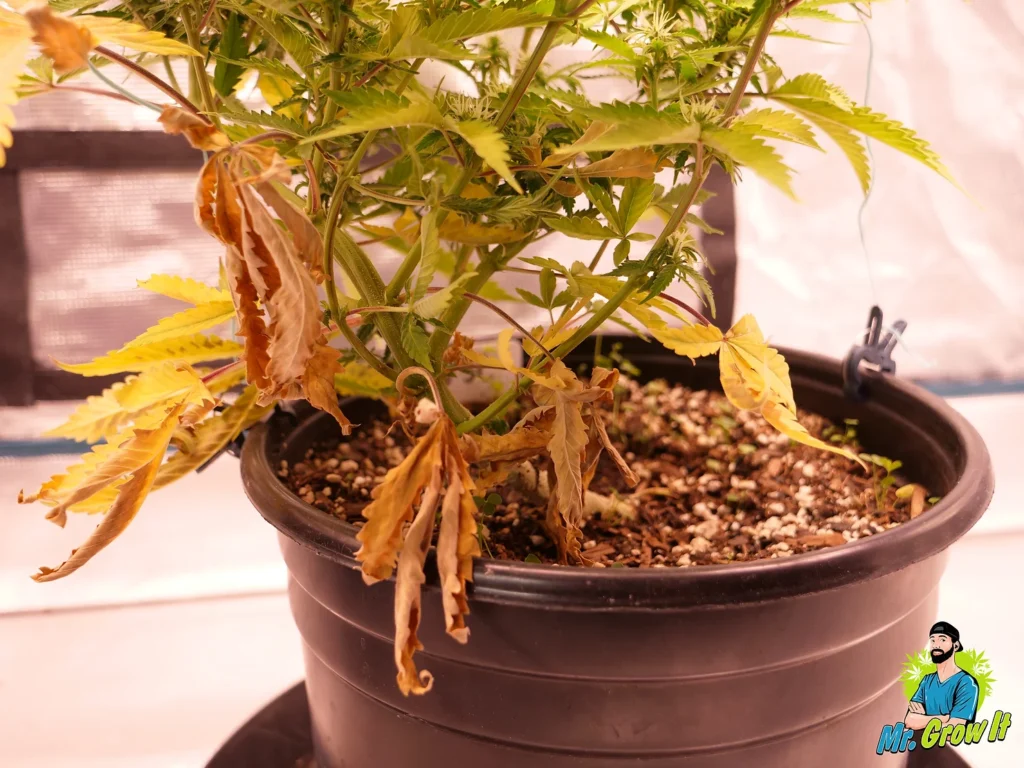
Supplying Nitrogen in Different Stages
Vegetative Stage: Cannabis plants that have nitrogen toxicity or excess nitrogen during the flowering stage produce smaller yields. Excess nitrogen can also impact the taste and smell of the buds. This is why feeding the right nutrients is important during the different stages. In the vegetative stage, cannabis plants need more nitrogen, therefore, any cannabis-friendly plant food with high levels of nitrogen is suitable for use. To check the nitrogen (N) ratio in the plant food, read the N-P-K value on the packaging. The three numbers on the package indicate the levels of nitrogen, phosphorus, and potassium which can help you make a good purchasing decision.
Flowering Stage: During the flowering stage, cannabis plants do not require high levels of nitrogen. Therefore, using a nutrient lineup made specifically for the flowering stage is important. If you cannot find a good “bloom” or flowering nutrient lineup, try using cactus nutrients. Cactus plant foods contain a suitable amount of nutrients for cannabis plants in the flowering stage. Using a good nutrient lineup will help prevent a deficiency from happening in the future. Besides that, you should also regularly monitor the root zone’s pH to ensure that it is in the ideal range so the plant can absorb all of the vital nutrients that it needs from the growing medium.
The measures and treatments above will set your plant on the path to recovery. Keep in mind, it may take a few days for the plant to recover. The impacted leaves that are yellowing may recover, but if they are too damaged, those leaves will not recover from these treatments.
![]()

